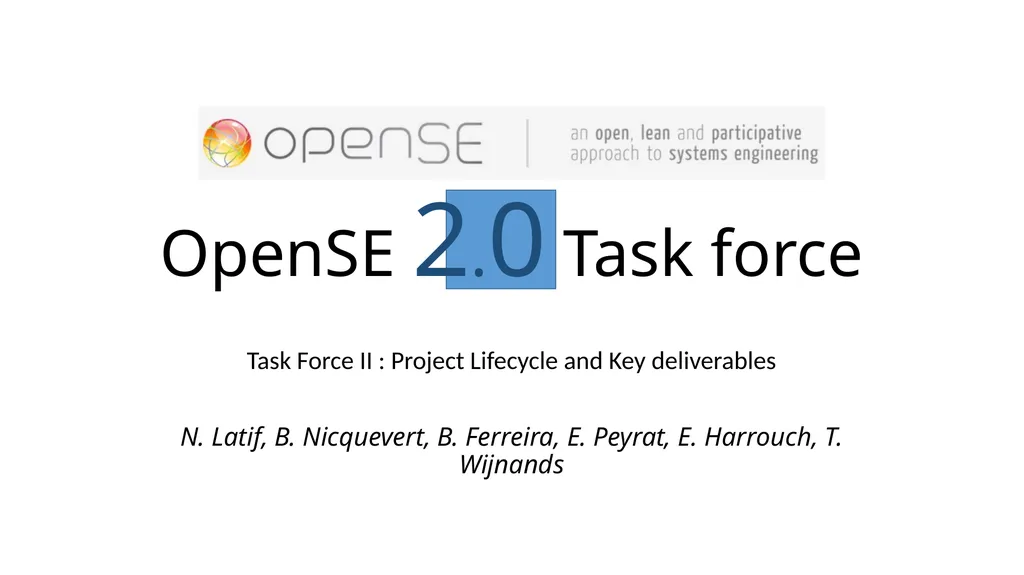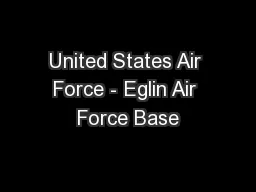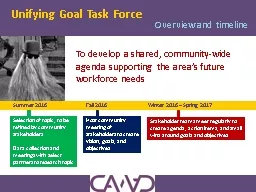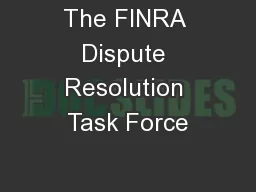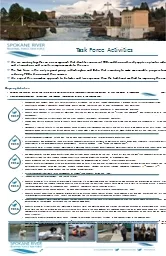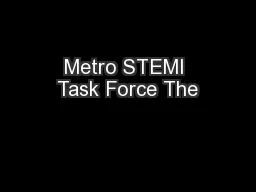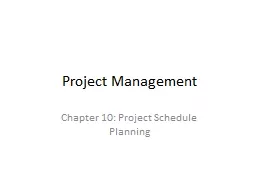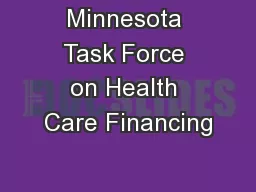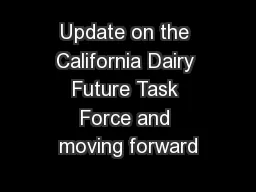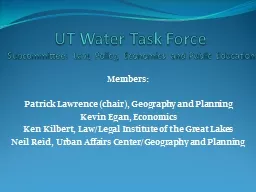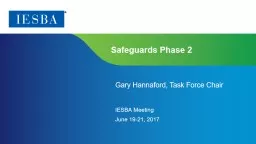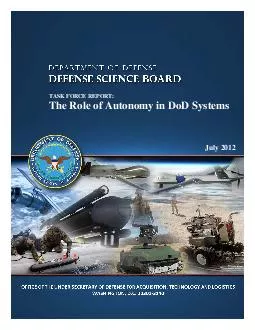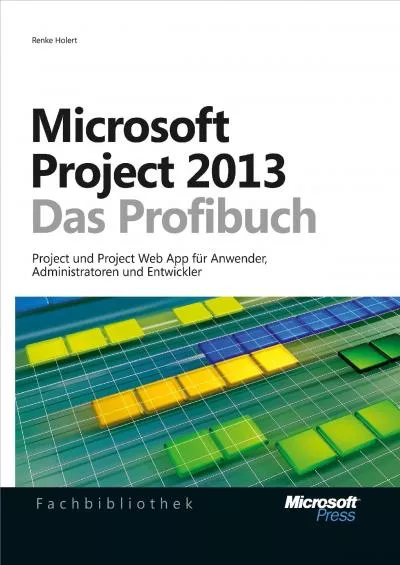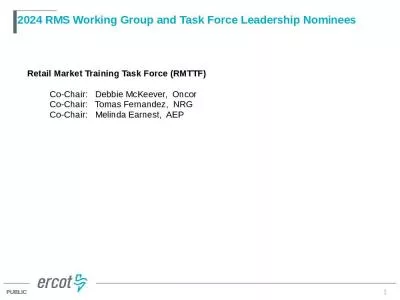OpenSE 2.0 Task force Task Force II : Project
Author : ellena-manuel | Published Date : 2025-06-23
Description: OpenSE 20 Task force Task Force II Project Lifecycle and Key deliverables N Latif B Nicquevert B Ferreira E Peyrat E Harrouch T Wijnands Mandate Deliverable A 20min presentation to be given on 11 October am Goals
Presentation Embed Code
Download Presentation
Download
Presentation The PPT/PDF document
"OpenSE 2.0 Task force Task Force II : Project" is the property of its rightful owner.
Permission is granted to download and print the materials on this website for personal, non-commercial use only,
and to display it on your personal computer provided you do not modify the materials and that you retain all
copyright notices contained in the materials. By downloading content from our website, you accept the terms of
this agreement.
Transcript:OpenSE 2.0 Task force Task Force II : Project:
OpenSE 2.0 Task force Task Force II : Project Lifecycle and Key deliverables N. Latif, B. Nicquevert, B. Ferreira, E. Peyrat, E. Harrouch, T. Wijnands Mandate Deliverable : A 20-min presentation to be given on 11 October a.m. Goals : • Reviewing the OpenSE knowledge domain as featured in the OpenSE booklet, • Discussing the appropriateness w.r.t. projects typologies at CERN, • Discussing the alignment with other standards such as PMBoK, HERMES, PRINCE2, .. • Discussing the limitations due to CERN support tools such as EDH, MS Project, CERN templates • Propose improvements (with a rationale), for both the booklet and the OpenSE training material Note: the aim is not to start rewriting the booklet nor to make a new set of training handout slides! OpenSE 2.0 - lifecycles Lifecycle design - Project Phases Minimum number of phases is 4 Each phase in the lifecycle must have Resource management (financial people, buildings, equipment) Criteria to entry a phase Criteria to exit a phase ‘Documentation’ at a transition Each project needs at least : Approved Proposal Management plan Close out report Benefits plan (may be included in proposal if small) ‘A collection of logically related project activities that culminates in the completion of one or more deliverables’ Rules : Documentation @ phase gates Project Business case Project Charter Project Management Plan Benefits management plan At the end of a phase, compare the project information against the information that can be found in : ‘every phase needs to be initialized, planned, executed, monitored and controlled and closed’ Results of this comparison can be : Continue to the next phase - RAS Remain in the current phase Rework deliverables from the current phase Stop the project Continue to next phase with modifications Project Phases Concept development Feasibility Study Customer Requirements Solution Development Design Prototype Build Test Transition Commissioning Milestone review Lessons learned Examples of phase names : Management Needs Nature of the project Unique characteristics of the company or the technology Project elements including technology, engineering, business, process or legal Decision points Criteria to establish a phase : Project Life Cycle Starting the project Organize and prepare Carry out the work Ending the Project Project Phase Project Phase Project Phase Project Phase initiating planning executing monitoring closing Integration Scope Schedule Cost Quality Resource Communications Risk Procurement Stakeholder © PMBok PMI 6thEd Business Case Business Case (without excel !) Question 1 : Are the
